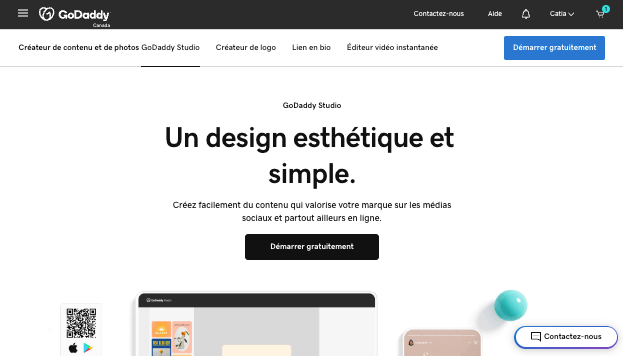When starting a business, it’s a common misconception that everyone is a potential customer. Assuming this is not only inaccurate, it can be bad for business. The truth is, only certain people will buy from you. And the way you define this group — your target market — affects just about every other business decision you make.
The earlier you identify your target customer, the better.
If you’re in the process of writing your business plan or want to learn how to better identify likely buyers, keep on reading.
How to picture your target customer (with examples)
Yes, your service or product is terrific. But not everyone will need or want it. Painting an accurate picture of your most likely customers will make it easier to win them.
- Give them a name.
- Define their problems and needs.
- Connect them with your business.
Before we explain exactly how to find your target market, let’s define the term.
What is a target market?
A target market (also interchangeably known as a target audience) is the specific group(s) that your services, products and/or activities are aimed to serve. In plain terms, it’s your customers!
A target audience is made up of people who share similar characteristics, such as:
- Geographic location
- Buying power
- Demographics (age, income, type of household, etc.)
Depending on your business, you can have more than one target market that you serve.

For example, McDonald's Canada carries various food items and sells them in different ways:
- In-store
- Drive-thru
- Via mobile app
It has multiple audiences and uses different marketing strategies to reach each one.
First, do research
If at all possible, do research before you launch your business. This information can be vital to a number of startup decisions. For example, knowing your target market could affect the:
- Location of your shop
- Hours you operate
- Price you will sell your items
- Styles you’ll offer
- Music you’ll play
There are plenty of consultants out there who will do market research for you, but there's also a lot you can do yourself. You can find a ton of useful data online in:
- Industry reports
- Newspaper articles
- Canadian government websites
- Economic reports
- Google search trends
If your business is already up and running, you could look at your sales reports, churn statistics and Google Analytics traffic reports for your website.
All of this information can be mined for insights into who your best customers are.
Then use that research to create a customer persona
Wait — what is a persona? A persona is an imaginary person who has all the characteristics you’ve identified.
This is a made-up person who greatly resembles your customer.
A persona puts a face to your target market’s behaviours, needs, wants and problems.
1. Give them a name
Start off simple — name your persona, giving them a gender, age and a profession. For example:
Jessica is 27 years old, a marketing specialist who lives in Toronto with a roommate. Jessica is a social butterfly who loves spending time with her friends, trying new classes and spending time bettering herself.
2. Define their problems and needs
Next define your target’s problems and concerns:
She doesn’t have much time in the mornings to do anything other than run out the door. She often feels tired from spreading herself too thin with work and her social life. She rarely has time to try new things.
3. Connect them with your business

Photo: Inspired Horizons Digital Marketing on Unsplash
The last step is to make a link between this person and the problems your business solves:
Jessica wants to combine her physical activity and social interactions in one to feel fulfilled. She goes to a variety of workout classes offered at your gym a few times a week.
She feels confident and comfortable going with her friend (thanks to your two-for-one membership specials) so she sticks to the routine. She needs class times that start after work, but also some available on the weekends, in case she misses a workout during the week.
It’s important to highlight how your business addresses your imaginary customer’s problems/concerns differently than your competitors as well. Perhaps, Jessica couldn't previously find a group fitness gym near her that offered such variety and flexible class hours.
Strategize on how you will reach and sell your product or service to this “person.” Does this type of person live on Facebook or Instagram? Approach them there via regular posts of interest to the fitness-minded. Gather their email addresses and send them coupons and fitness hacks and tips.
Expanding to secondary personas should only be considered down the line when you are more established and have the additional resources to execute new strategies.
Case study

A great example of a business that knows its customers and has withstood the test of time is Dr. Bronner’s Pure Castille Soap. Founded in 1948 by Emanuel Bronner, his soaps were different from any others on the market at the time.
The brand’s motto, “all-for-one and one-for-all,” resonated well in the aftermath of WWII.
From the beginning, the company understood who their customers were. It’s not only people who want to buy soap, but who want one product for many different uses:
- Hand wash
- Laundry detergent
- Floor cleaner
These are consumers who need versatility; people who are budget-minded and shop for natural and ethically made products.
Dr. Broner’s product has been so successful because it meets this market’s problems, needs and behaviors. Nearly 70 years later, it’s still one of the leading natural castile soap concentrates found in the market.
It pays to know who your talking to
Now that you know what a target market is, you can begin to define yours for your business. If you do research ahead of launching your business, you’ll save yourself time and money on missed opportunities and misfires.
Your efforts are better spent on a smaller group of the right people, than on everybody.
Everything you do to define your ideal customer is worth the time and effort because it will help you speak directly to the right people. Attracting a loyal following will ensure your business’ longevity and its ability to stand out in the market.
Editor’s note: Nothing gets the word out like a website. Launch one today with a WordPress website hosted at GoDaddy. It’s all the fun of WordPress with the simplicity and reliability of GoDaddy.





